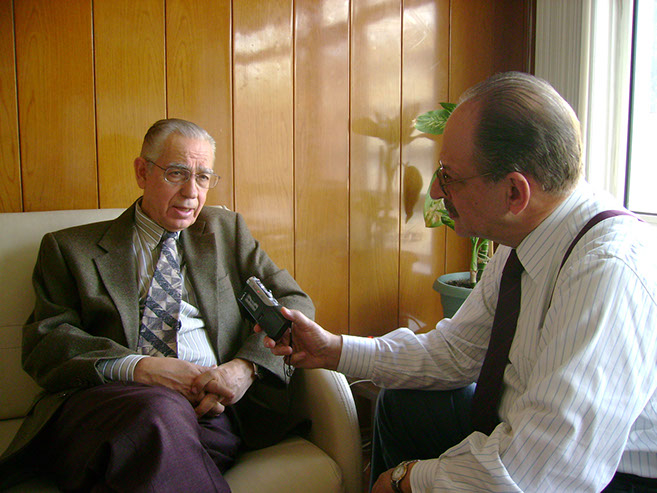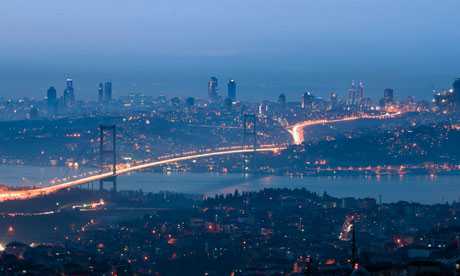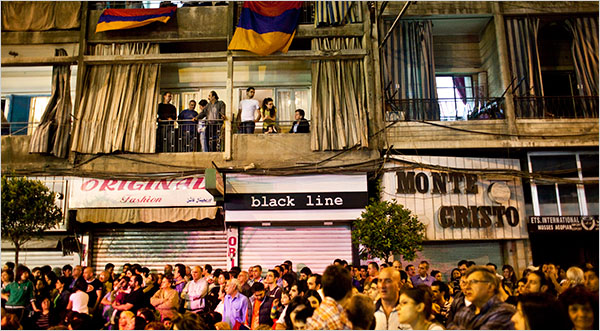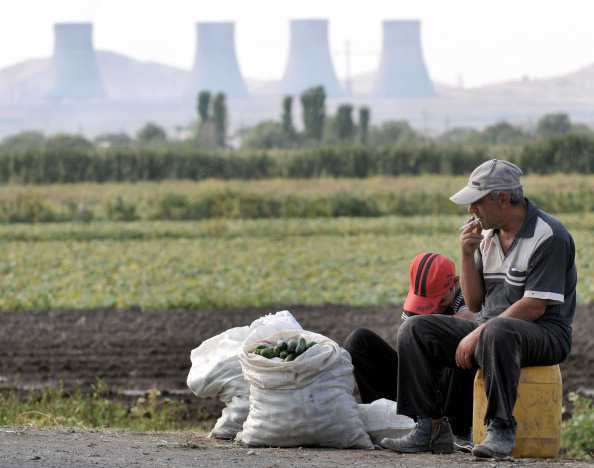By Ferruh Demirmen, Ph.D.
September 9, 2017
The dispute between the Armenian lobby and the Americana-at-Brand shopping mall in Glendale, California last month on whether to display an advertisement on a billboard precipitated a series of events, shedding a disturbing light on the activities of the lobby and two pro-Armenian news outlets. The billboard was intended to advertise The Architects of Denial, a documentary purportedly giving an account of what the lobby calls “Armenian genocide” through interviews with survivors.
The documentary was funded to the tune of 50,000 dollars by the well-funded Armenian lobby.
Both the initial squabble and its aftermath were reported in the Armenian media as well as in the LA Times and its affiliate Glendale News-Press – outlets well known for their sympathies towards Armenian causes. The town of Glendale, just outside Los Angeles, is home to more than 65,000 Armenian Diaspora residents.
Principled stand and surrender
The Carusso-owned Americana initially refused to accept the billboard, arguing – correctly – that the advertisement was politically charged and would violate the city’s zoning rules. The owners had received advice from the Turkish consulate in Los Angeles in addition to the Armenian community about the advertisement, and was trying to keep its properties “neutral and impartial.”
The notion of neutrality and impartiality embraced by Americana was not acceptable for the Armenian Diaspora. Upon Americana’s refusal, the Armenian lobbying apparatus quickly sprang into action. With intense pressure from the lobby, including threat of boycott of all Carusso-owned properties, Americana quickly relented and agreed to display the advertisement.
It also said it would allow the screening of the documentary in the mall free of charge.
Jackie Levy, executive vice president of operations for Carusso, even apologized for the initial rejection of the ad.
The bullying tactics of the Armenian lobby and Americana’s cowardly reversal of its earlier decision were a shame. Here was a case of political extortion exerted on a private company by an ethnic minority that wanted to propagandize a century-old grievance – of all places, in a shopping mall, where people come to relax and do shopping. And the company pitifully caving in.
For the Armenian lobby, apparently no place in America is off-limits in pursuit of its “genocide” propaganda.
The sparring exchange
The event spurred an exchange of opinions between the Turkish and Armenian sides in the comments section of the LA Times. Denouncing the Armenian lobby’s strong-arm tactics and Americana’s total capitulation to its demands, the Turkish commentators argued that the supposed documentary would narrate an old, unproven “genocide,” and that Americana had abandoned all pretences of objectivity.
In response, the Armenian commentators countered that the “genocide” was real and well-documented, labeling the opposition as “genocide deniers.”
Although most of the exchanges between the two sides were civil, some of the comments from the Armenian side had a venomous tone. The animosity from the Armenian side was directed not only at Turks, but also at Islam in general.
One of the Diaspora Armenians referred to Turks as “Turkish Mongol Mutts from Central/East Asia,” adding that “Islam is based on three principles: stealing, killing, and lying.”
Another one accused the “Islamic Government of Turkey” for “spreading lies and bribing scholars and historians.”
Dark undertones
More disturbing was implicit or veiled threats of violence from the Armenian side. A Diaspora Armenian fakely named “S.Schmidt” became ominously too personal with Mr. Ergun Kirlikovali, one of the Turkish commentators. He identified Kirlikovali as a Muslim Turk born in Turkey and now living “comfortably in California,” revealing Kirlikovali’s age, the county he lives in, and even the full name of his wife. The one important information he left out was Kirlikovali’s street address.
The question arose: What was the purpose of revealing such personal information?
“S.Schmidt” said Mr. Kirlikovali is “the president of the Assembly of Turkish American Associations (ATAA), a corrupt racist organization whose ONLY purpose is to discredit the Holocost” [sic]. He counseled Kirlikovali to “take your fundamentalist Turkish point of views back to your ancestral lands of Mongolia along with your family.”
He also wanted to banish another Turkish commentator as an “agent of the government of Turkey.”
Alarmed that he was being personally targeted, and fearing violence against him or his family, Kirlikovali responded back: “This is a public alert to FBI. I am getting a lot of hate mail from Armenians. I am listed as number one in at least two Armenian hate sites. If something happens to me or my family members, FBI people, please go after this fellow who hides behind the fake name S.Schmidt. He is a notorious Armenian cyber-terrorist who demonizes any one, group, company, religion, or nation that disagrees with Armenians.”
Media censure
The disturbing turn of events led the LA Times to quickly remove the incendiary comments from its website. The editors were evidently spooked by Kirlikovali’s call for a FBI alert, and the fact that some of the comments from the Armenian side, with a dark underbelly, were not reflecting favorably on the Diaspora.
Also expunged from the comments section were two commentaries entered under an alias by this author, decrying the poisonous invective emanated from the Armenian side, likening such diatribe to the mentality of the Ku Klux Klan – the difference being that the targeted group is not black Americans but Moslems and Turks – castigating the LA Times for allowing such racism on its website, and suggesting that Kirlikovali’s FBI alert should be taken seriously. The readers were reminded of the terrorist activities directed against Turkish diplomats in the 1970s and 1980s by fanatics such as Gourgen Yanikian and Hampig Sassounian.
After “sanitizing” the comments section, of the 55 comments originally posted, at the writing of this article there are now only 41 comments that can be seen on the LA Times website. The 14 comments that were deemed to be incendiary or harshly provocative have been censured out and no longer accessible.
The bottom line
The whole episode was a reminder of the hatred or animosity ingrained in the minds of some Diaspora Armenians. Anti-Turkism, Islamophobia, and ethno-religious bias and bigotry seem to be alive and well in some quarters of Armenian Diaspora, and perhaps even more disturbingly, the columns of LA Times.
Further, language, indirect that it might be, from the Armenian Diaspora that could potentially agitate Armenian youths to take up violence to advance Armenian causes is not new. An example came to light in the wake of the European Court of Human Right’s 2015 Grand Chamber decision on the Switzerland-Perinçek case when Harut Sassounian, a leading Diaspora lobbyist, commented on the defeat of Armenians and criticized the court with an insinuation that was troubling.
Turks and Turkish Diaspora should wake up to the kind of adversary they are facing.







Comments are welcomed and encouraged. Though you are fully responsible for the content you post, comments that include profanity, personal attacks or other inappropriate material will not be permitted. Asbarez reserves the right to block users who violate any of our posting standards and policies.